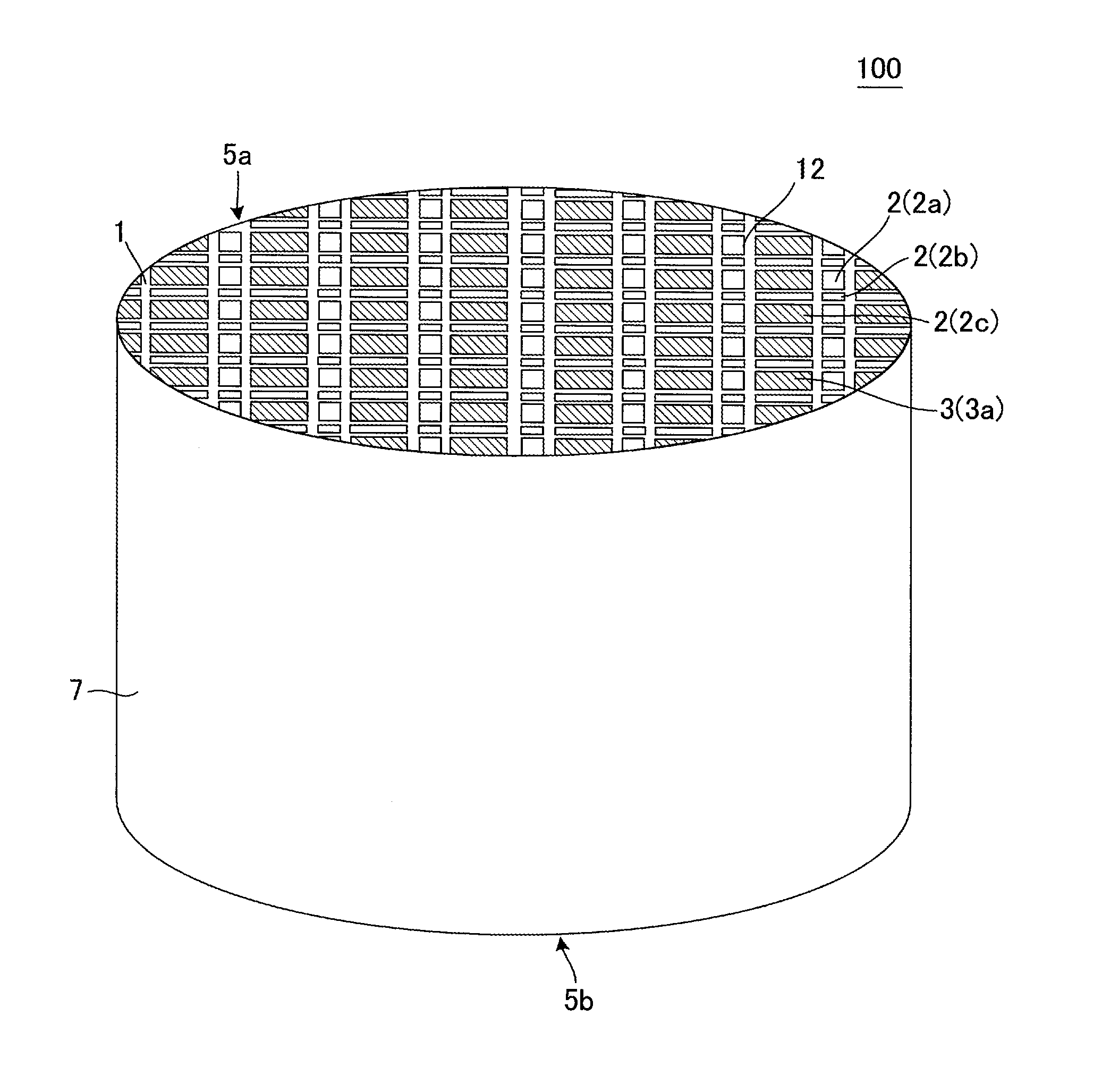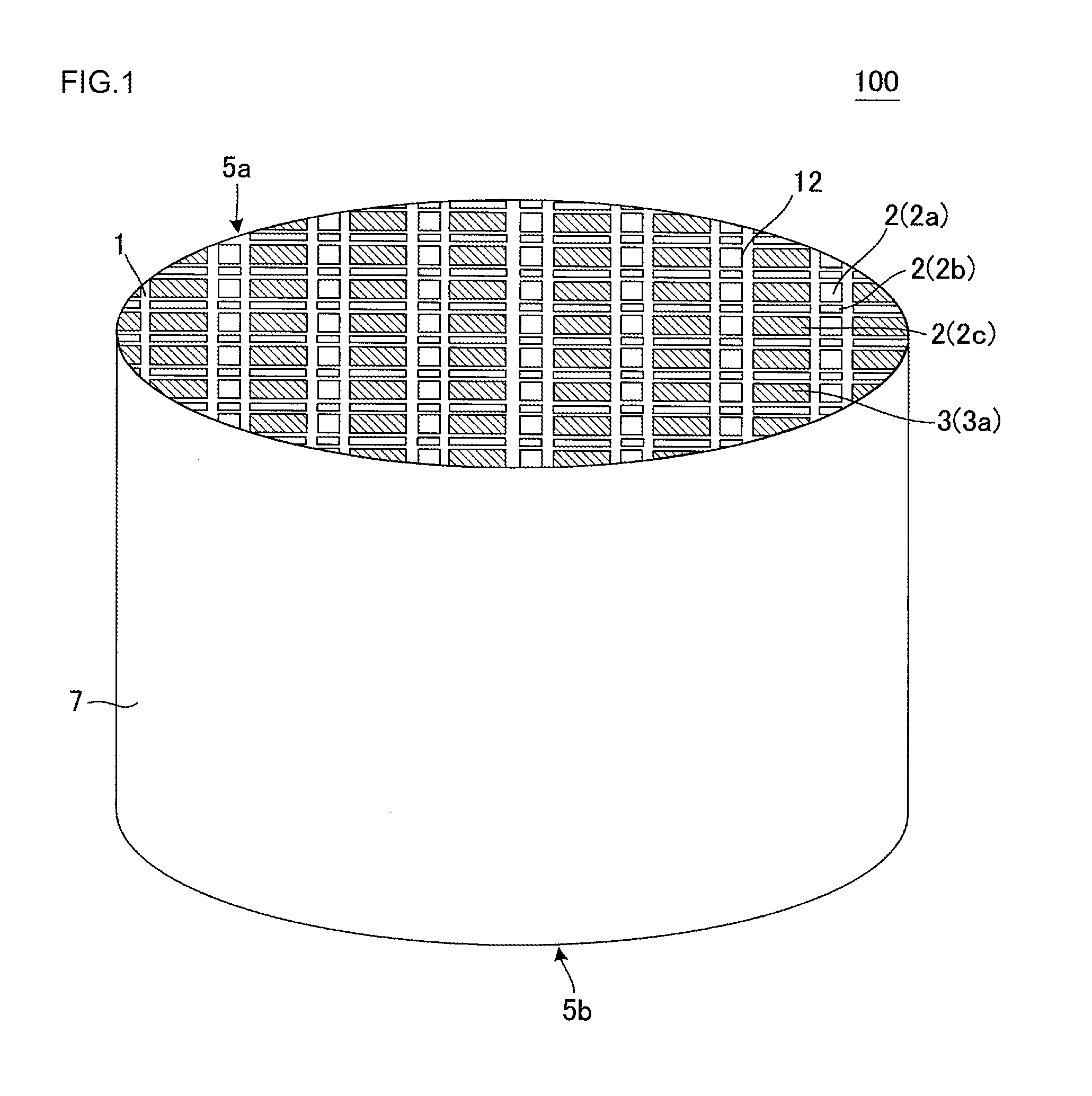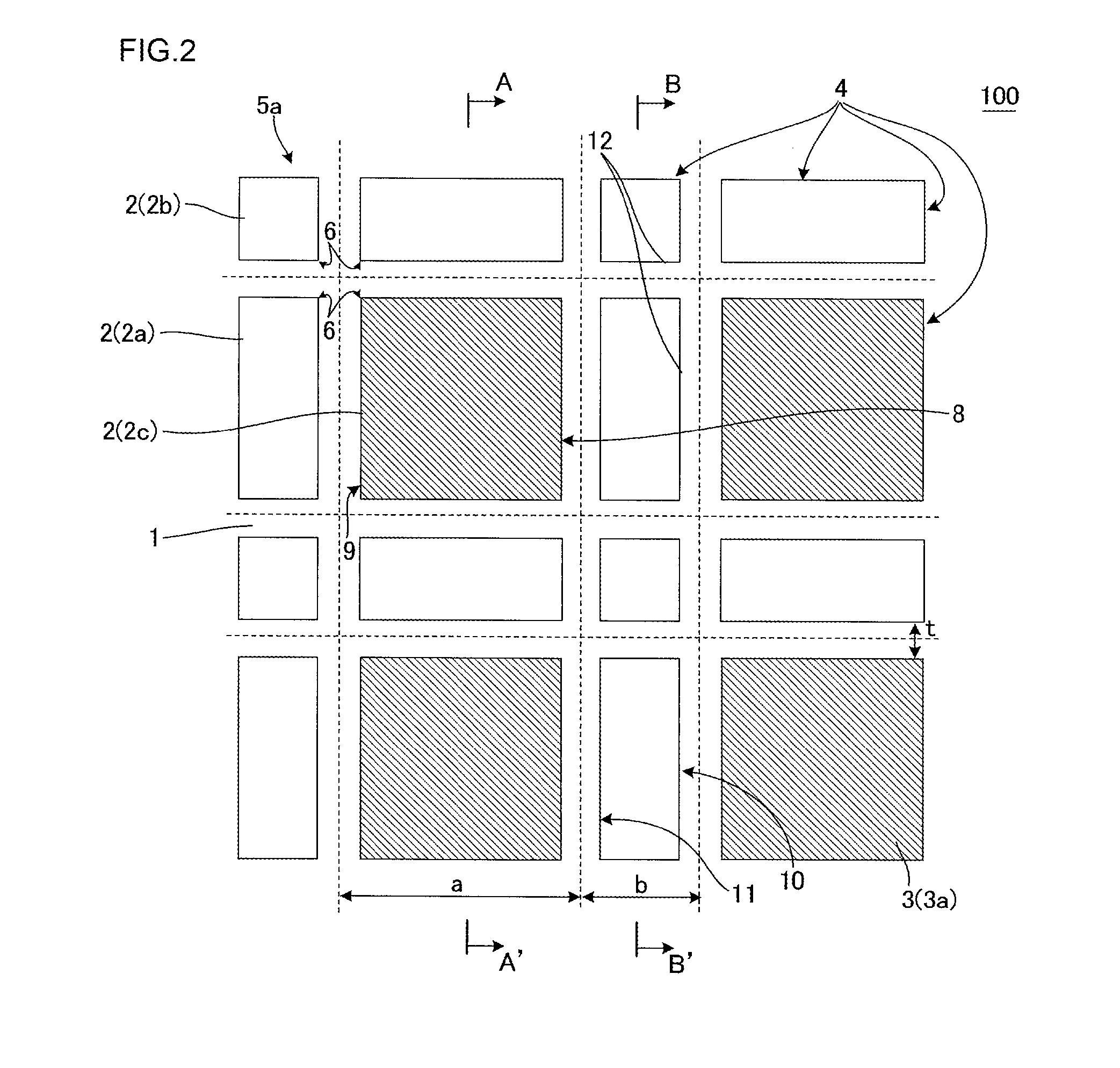Honeycomb filter
- Summary
- Abstract
- Description
- Claims
- Application Information
AI Technical Summary
Benefits of technology
Problems solved by technology
Method used
Image
Examples
example 1
[0084]As a ceramic raw material, a mixture of silicon carbide (SiC) powder and metal silicon (Si) powder at a mass ratio of 80:20 was prepared. To this ceramic raw material, hydroxypropoxyl methylcellulose as a binder and a water absorbable resin as a pore former were added, and water was also added, to prepare a forming raw material. The obtained forming raw material was kneaded by using a kneader, to obtain a kneaded material.
[0085]Next, the obtained kneaded material was formed by using a vacuum extruder and 16 rectangular pillar-shaped honeycomb segments each having such a plugging arrangement as shown in FIG. 2 and FIG. 4 were prepared. A sectional shape of each honeycomb segment in a direction perpendicular to a cell extending direction was a square of 36 mm×36 mm and the segment had a length of 152 mm. In addition, a partition wall center distance a shown in FIG. 2 was set to 2.2 mm, a partition wall center distance b was set to 0.76 mm and a partition wall thickness t was 0.3...
PUM
| Property | Measurement | Unit |
|---|---|---|
| Fraction | aaaaa | aaaaa |
| Thickness | aaaaa | aaaaa |
| Thickness | aaaaa | aaaaa |
Abstract
Description
Claims
Application Information
 Login to View More
Login to View More - R&D
- Intellectual Property
- Life Sciences
- Materials
- Tech Scout
- Unparalleled Data Quality
- Higher Quality Content
- 60% Fewer Hallucinations
Browse by: Latest US Patents, China's latest patents, Technical Efficacy Thesaurus, Application Domain, Technology Topic, Popular Technical Reports.
© 2025 PatSnap. All rights reserved.Legal|Privacy policy|Modern Slavery Act Transparency Statement|Sitemap|About US| Contact US: help@patsnap.com



